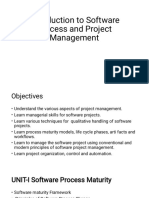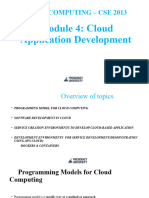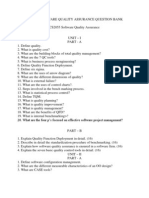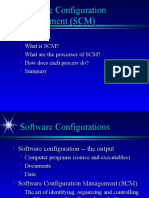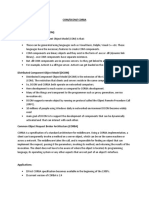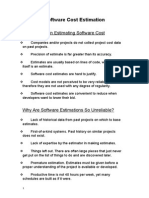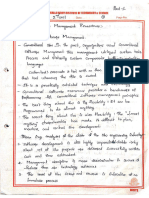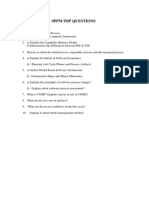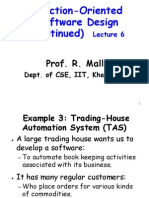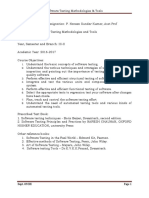0% found this document useful (0 votes)
315 views8 pagesSoftware Process Assessment
Software Process Assessment is a systematic evaluation aimed at identifying strengths and weaknesses in software development processes to improve efficiency and quality. Key steps include initiation, data collection, evaluation, and reporting, using frameworks like CMMI and ISO/IEC 15504. The benefits include improved software quality, reduced costs, and enhanced customer satisfaction, as demonstrated in a case study where a medium-sized company achieved significant improvements after assessment.
Uploaded by
Aasia QayoumCopyright
© © All Rights Reserved
We take content rights seriously. If you suspect this is your content, claim it here.
Available Formats
Download as PPTX, PDF, TXT or read online on Scribd
0% found this document useful (0 votes)
315 views8 pagesSoftware Process Assessment
Software Process Assessment is a systematic evaluation aimed at identifying strengths and weaknesses in software development processes to improve efficiency and quality. Key steps include initiation, data collection, evaluation, and reporting, using frameworks like CMMI and ISO/IEC 15504. The benefits include improved software quality, reduced costs, and enhanced customer satisfaction, as demonstrated in a case study where a medium-sized company achieved significant improvements after assessment.
Uploaded by
Aasia QayoumCopyright
© © All Rights Reserved
We take content rights seriously. If you suspect this is your content, claim it here.
Available Formats
Download as PPTX, PDF, TXT or read online on Scribd
/ 8

